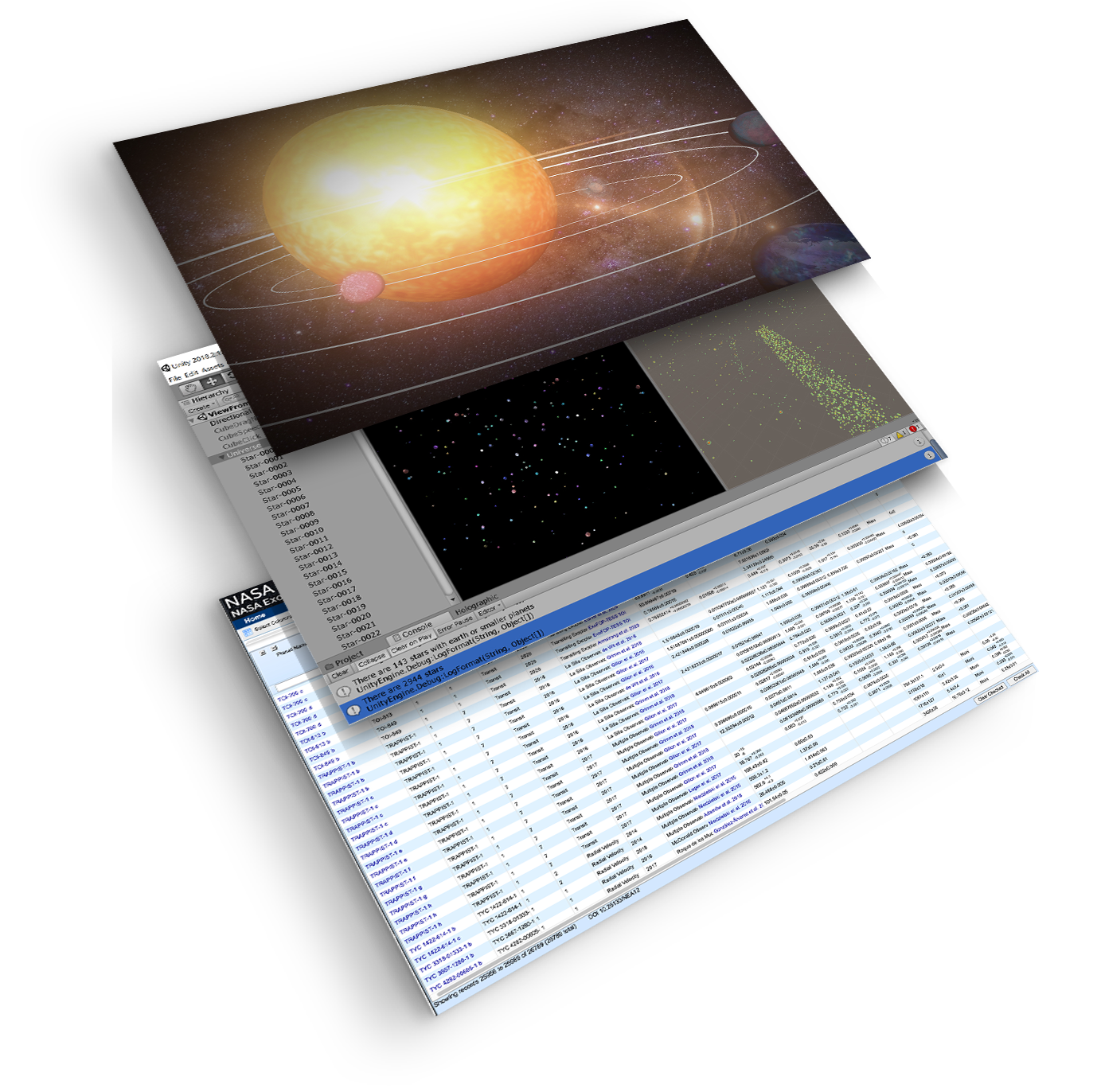
Searching for Sister Gaia
In this VR Edutainment Experience, the player assumes the role of an interplanetary voyager searching for potential life-bearing worlds. The journey through a simulation of recently discovered distant planetary systems illuminates the rare conditions that make life on earth possible.
Vision
This endeavor grew out of a love for immersive technology, space exploration and a yearning to create a meaningful and impactful project. What started as a mere twinkling of an idea at a hackathon, blossomed as the concept continued to be shared. It began to take on a life of its own.
In addition to a stand alone headset experience designed for space enthusiasts and college educators, the long term vision includes live performance domed experiences conducted using body and hand tracking.
Constraints
Time and money. Mostly money.
Virtual Reality
Creator
Inspiration
Prompted by a deep yearning to be more impactful in the world, I became fascinated by space exploration and virtual reality at about the same time. The film, “Hidden Figures” reignited my early career interest in math, engineering and the sciences. Subsequently, my latent and at the same time urgent craving to solve complex technical challenges was met by my awareness of the increased buzz about virtual and augmented reality.
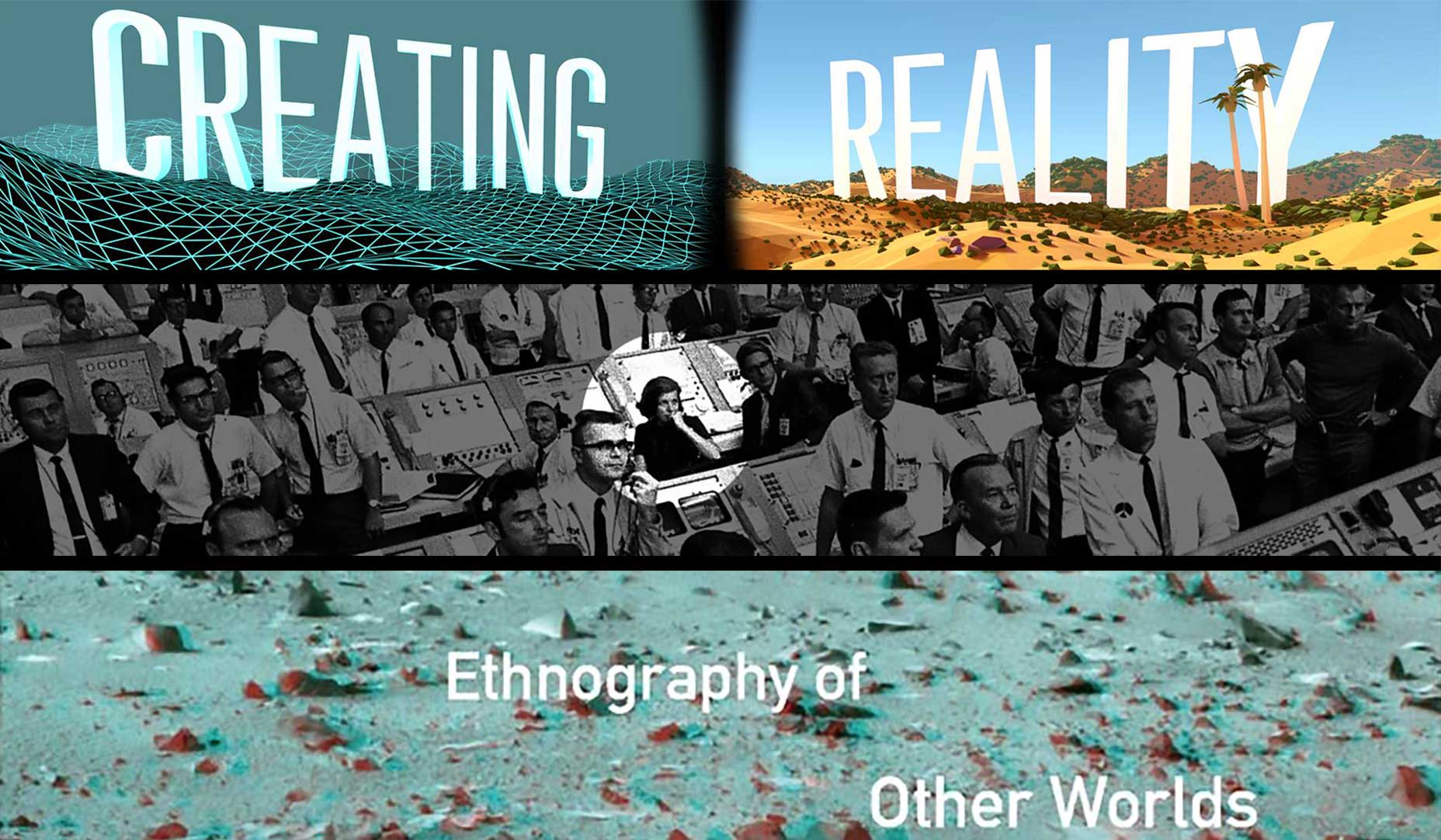
NASA Space Apps Challenge
My research into happenings having anything and everything to do with space exploration or VR led me to the NASA Space Apps Challenge. Being immersed in the communities by throwing myself into hackathons, conferences, meetups and volunteering with leading industry organizations seemed the best way to learn about both.
iET: Immersive Exoplanet Telescope
The idea for the Immersive Exoplanet Telescope was born, but never realized, at USC’s Creating Reality Hackathon. This where I met Lisa Messeri who’s work, “Placing Outer Space”, incited fervor to pursue the project.
I was able to excite a team of remote artists and developers to commit a weekend and enter the NASA Space Apps Hackathon. We extracted data from the NASA Exoplanet Archives, ingested it into Unity and rendered all of the stars with known exoplanets relative to earth. Later I would further develop the application to allow travel to any of those stars and render its orbiting exoplanets.
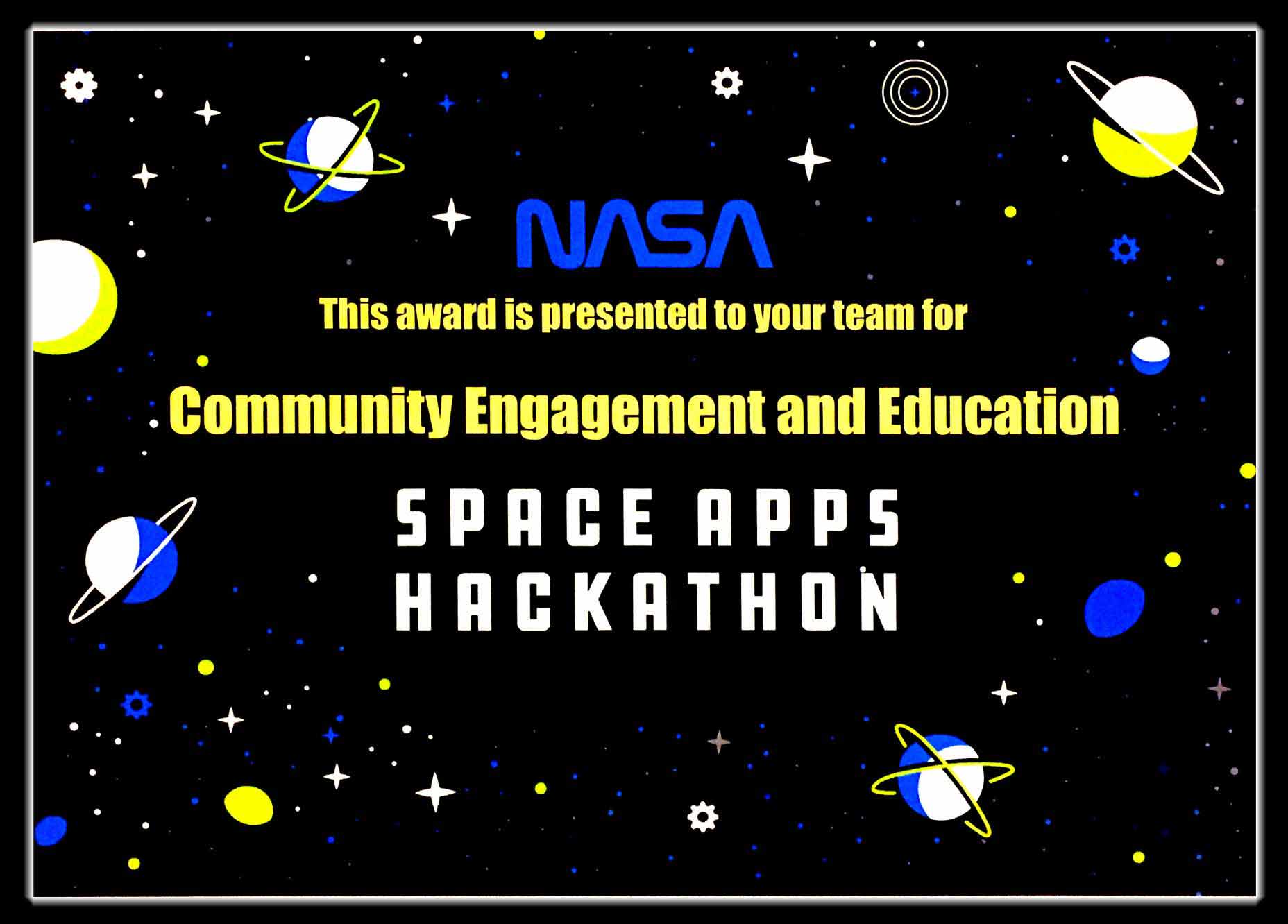
Winner: Community Outreach and Education
Building the team and leading the project provided me with the opportunity to get nerdy with the exoplanet science and data, extend my understanding of VR and further develop my leadership skills. The project was a perfect union of my passion for space exploration and a desire to return to more technically challenging work. It’s trajectory would also encompass my passion to engage in work that was more meaningful and impactful to society.
Expansion
It was a thrill to see the first evidence of the stars rendered in VR. The formation of the Kepler data was a sure sign that we had correctly ingested the data. Then it was exciting, traveling from star to star, to see the “visualization” of the never-before-seen orbiting exoplanets.
And then it wasn’t. It was cool for me to have worked it out, and the idea was interesting, but as an engaging experience? Let’s be honest, after the initial intrigue, it got boring quickly.
So I pondered. What impact did I want the project to have? What made the subject matter interesting to me?
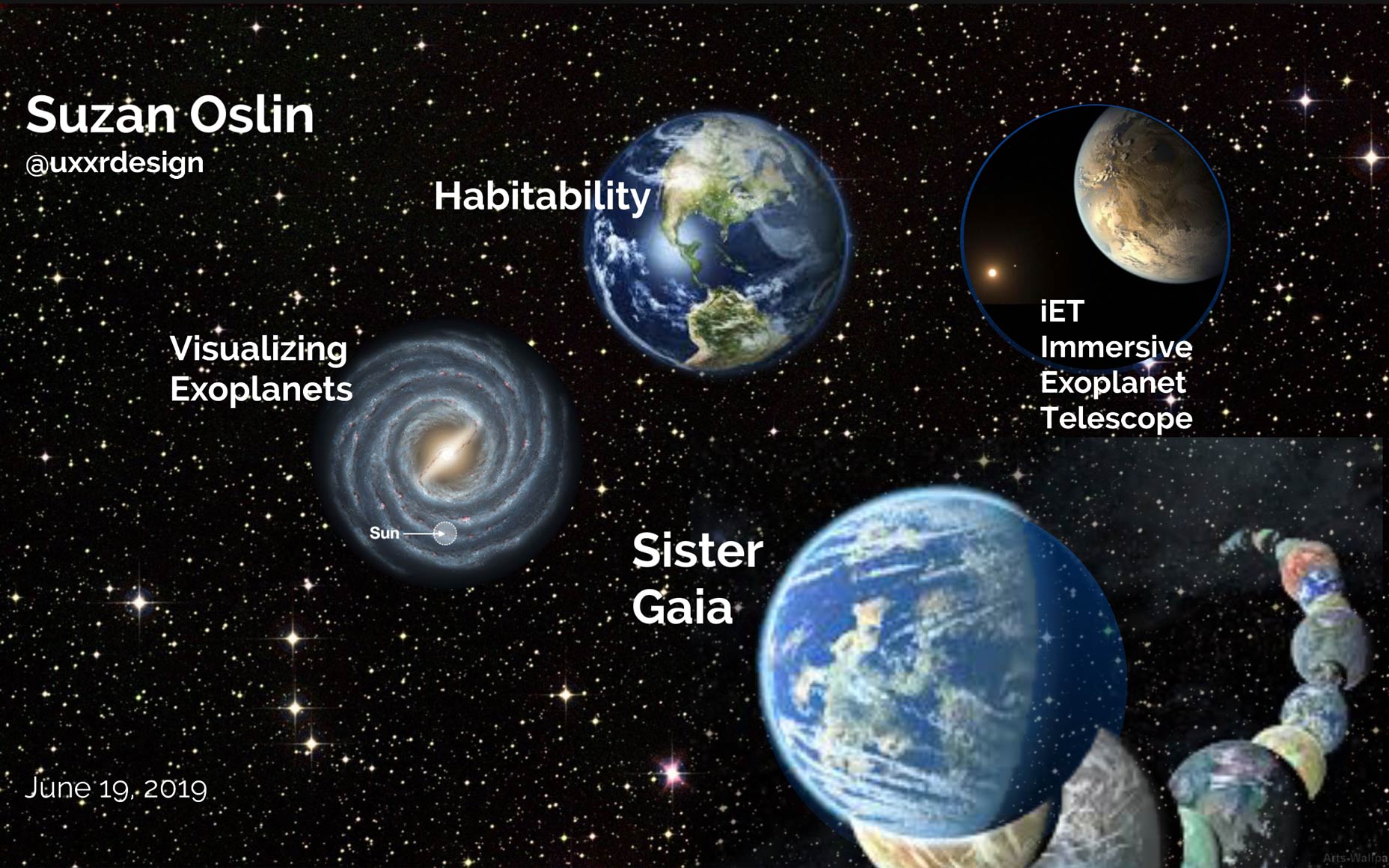
Earth's Precious Life
There were many influences in design theory, VR technology and space that led to the inception of “Searching for Sister Gaia”.
I realized that I want people to recognize and appreciate how unbelievably delicate life on planet earth is and to understand the intricate combinations of events and conditions that had to line up to make life possible. And how fragile the delicate balance of the entire earth’s ecosystems and atmospheres are. I want to inspire awe and appreciation, not only for life on planet earth but also for the science that teaches us about the wonder of our universe.
Story Development
As the explorer travels to distant planetary systems and interacts with the data through visualizations, the exoplanet data is compared to similar data points of planet earth. Little stories about the rare conditions that make life on earth possible are revealed in holographic form on the deck of the spaceship in contrast to the starkness of the barren exoplanets. In this way, the specialness of earth unfolds, as well as, the science of stars and methods of exoplanet discovery.
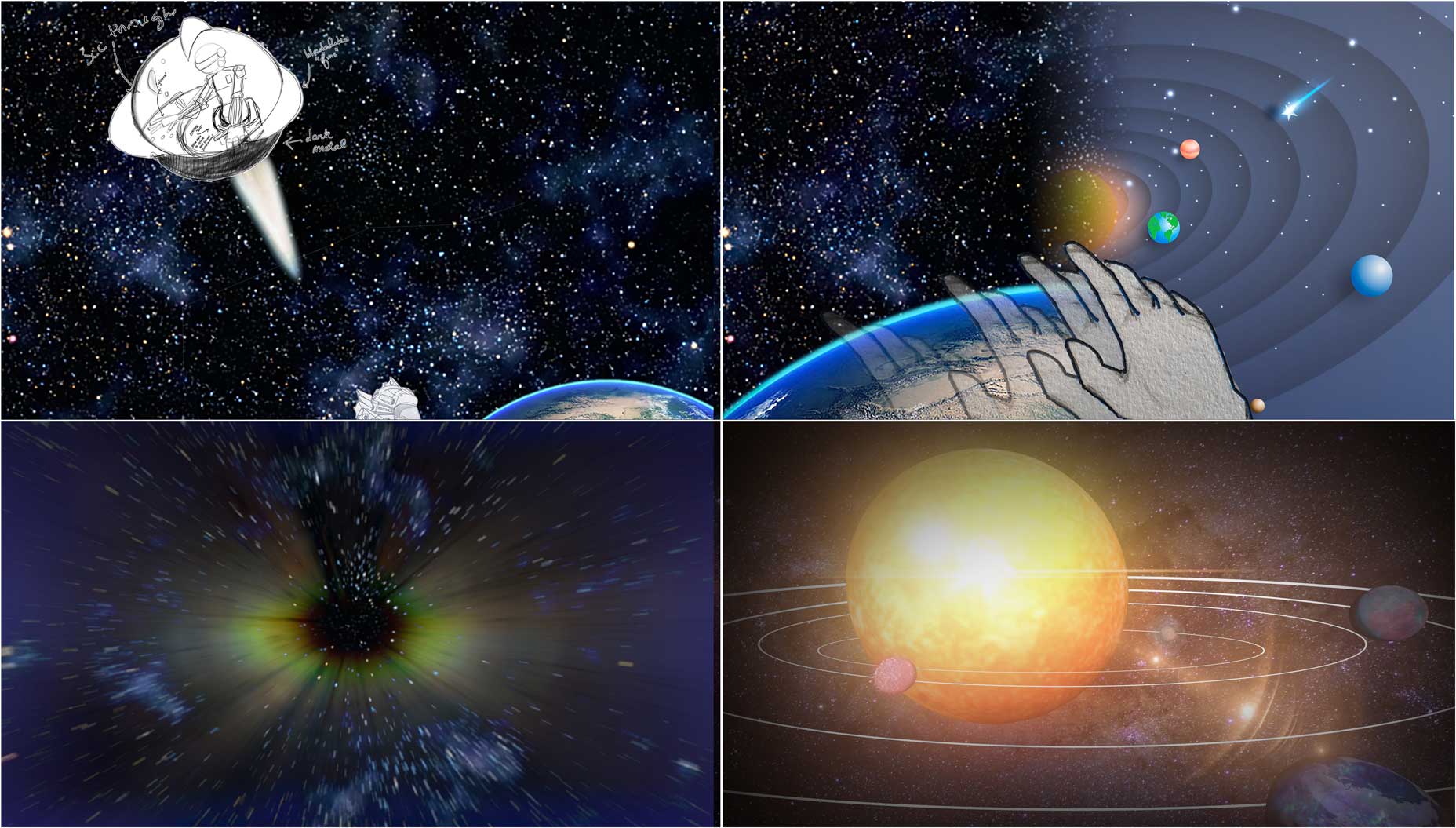
The Pitch
Working with student volunteers, I am busy preparing materials for a pitch to obtain funding. Simultaneoulsy, I am working on a Game Design Document and other production documents so that the developers and 3D artists can begin building as quickly as possible when the funds start rolling in.
Interaction Prototyping
Obviously a project such as this is an amazing opportunity to design an engaging and immersive experience, which is my first passion. It’s also a great breeding ground to explore the edges of natural, physics-based hand interactions. Thanks to the folks at Holonautic and XR First, I had the honor and privilege to be in the first graduating cohort of the Hand Tracking and Interactive Design Master Class.
Human Experience Design
Equipped with the technical skills to create an experience using hand tracking is only a beginning. There is still much to be explored in designing a natural interface for virtual and augmented reality. My work with Open AR Cloud and XR Research Study is centered on exploring human experience design for immersive realities and will continue to be my focus in the production of “Searching for Sister Gaia”. After all, it was from the concern for the explorer’s experience that this expanded version of the “immersive Exoplanet Telescope” was born.